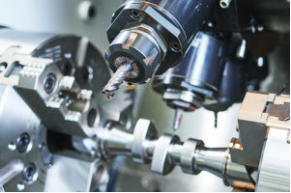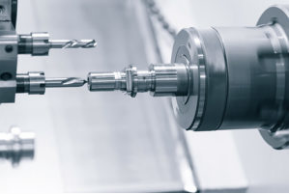Hotest Articles
How can you minimize the cost of CNC machining a product? The answer lies in your part’s design. Here are some tips to keep costs down.
When designing a part or product—no matter the manufacturing approach used—there are always a set of goals that inform what the final part will be. In the aerospace industry, for instance, lightweighting is often a key design goal. In other industries, factors such as surface finish or aesthetic might be a top priority. In almost all cases, however, cost is a driving factor throughout the design and manufacturing process.
There are a few ways that you can aim to stay within a production budget, especially when working with CNC machining. For starters, you can shop around to find the most cost effective rapid prototyping or CNC machining service. However, some of the most important cost-saving tips for CNC machining come into play during the design phase.
Low-cost design tips for CNC Machining
When looking at the costs associated with CNC machining, there is one important rule to keep in mind: the longer a part takes to machine, the more expensive it will be. Stemming from this rule are a number of other factors that come into play, such as material choice (materials that are easier to machine are faster and thus cheaper to work with) and part design. Today, we’ll focus on part design and how certain design choices can influence and reduce CNC Machining costs.
1. Avoid thin walls
Though CNC machining is capable of producing parts with extremely tight tolerances and thin walls (about 1mm), if cost is a driving factor for your product, it is advisable to thicken walls where possible. The reason for this is because machining a very thin wall can be tricky: if done too quickly, it risks damaging the part through vibrations. Properly machining thin walls requires the repetition of low cutting depths, which adds significant time to the machining process. Therefore, integrating thicker walls where possible in a part can help to speed up machining times and lower costs.
2. Integrate internal radii
When designing your part, it will save significant machining time (and costs!) to integrate internal radii instead of 90 degree angles at corners. Because CNC milling tools are cylindrical in nature, when they create corners inside a part they naturally have a curve, or radius. Bearing this in mind, designing a part with internal radii instead of sharp corners can streamline the production process. Additionally, the larger the internal radius, the larger milling tool can be used and the faster the machining time.
3. Avoid deep cavities
Another design tip to help minimize CNC machining costs is to avoid deep cavities and pockets in your part. The reason for this is two parted. First, the deeper the cavity, the longer it takes to cut away the material. Second, designing parts with cavities that are greater than 4x the diameter of the tool can necessitate specialized tooling and increase production costs.
4. Avoid deep threads
Following on the previous tip, it is also advisable to keep thread depths as low as possible to reduce machining costs. Unless absolutely vital to a given part, it is usually not necessary to integrate threads with depths greater than three times the diameter of the hole. Deeper threads—like deep cavities—can require the use of non-standard tools, which can drive up machining time and costs.
5. Stick to standard tool sizes
When designing a part, significant machining time can be saved by ensuring that dimensions that correspond to standard CNC tools are maintained. For instance, hole, thread and cavity diameters should correspond to common CNC tool diameters. Further, by maintaining the same hole and cavity dimensions across a part, fewer tool changes will be necessary, resulting in a faster CNC machining process.
6. Avoid high tolerances
Though CNC machining is capable of some of the highest tolerances of any manufacturing process, that does not mean that every part requires the tightest tolerances. In fact, only using tight tolerances when absolutely necessary can drastically reduce costs because achieving high tolerances increases machining time (as well as inspection times). If a part is submitted without specified tolerances, CNC machining services such as GUAN SHENG will implement their standard tolerance, which is suitable for many products. In GUAN SHENG’s case, the standard tolerance is ± 0.125 mm.
7. Reconsider the use of text
When designing your part for CNC machining think about whether it is necessary to integrate text or lettering into the part. Because engraving or embossing letters requires precision, the time and cost of machining can increase substantially. If your product requires lettering, consider using a finishing process, such as painting, instead. If it is necessary to integrate text into the part directly, stick with sans-serif fonts and choose engraving over embossing.
Keep it simple
In general, if you follow these seven design tips for CNC machining and—above all keep your part as simple as possible—production costs can be minimized significantly. A part that has no thin walls, that uses internal radii as well as consistent dimensions for holes and threads across the part will be much faster and cheaper to machine than a more complex component.






